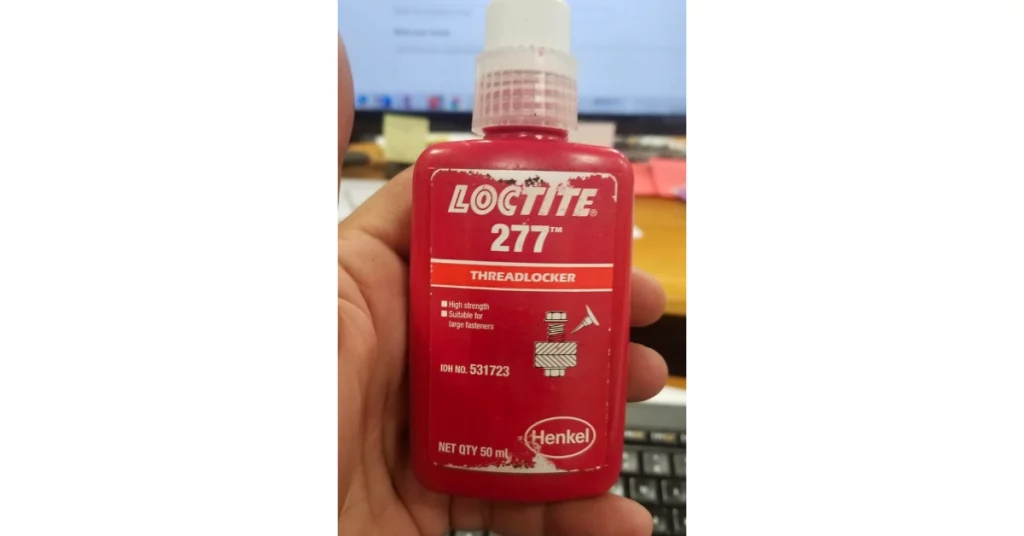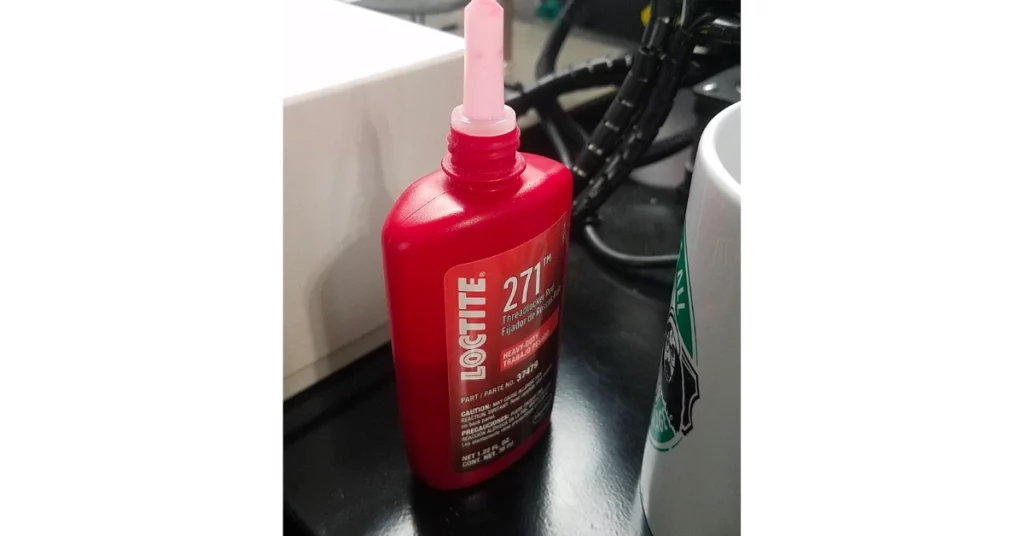Loctite is a well-known and adored brand in the world of adhesives, and they have multiple threadlockers available for various sizes of fasteners or screws you have. Loctite threadlockers are available in different colors, with each color representing the strength of that specific threadlocker.
Loctite 277 and 271 are both red-colored threadlockers, which means they are the strongest Loctite has to offer. So, in the battle between Loctite 277 vs. 271, which one should you side with and why? In this article, I’ll cover the features of Loctite 277 and 271 and how they differ from each other.
Read More: Loctite Blue vs. Red
Read More: Loctite 270 Vs. 271
Loctite 277 vs. 271

Loctite 277
Loctite 277 is a red, methacrylate-based adhesive made by Loctite-Henkel and is suitable to use for large fasteners and screws. The color of Loctite threadlockers is a significant indicator you should be looking for when purchasing one since it denotes the strength of the threadlocker.
Since Loctite 277 is red-colored, it’s a high-strength threadlocker from Loctite-Henkel, and you can use it for components that you do not plan to disassemble in the future. Loctite 277 is a high-viscosity-based adhesive and works on all metals and active and passive substrates.
Loctite 277 forms a permanent bond once it’s completely cured, and you can use it for parts and components that go through constant motion or vibration without the risk of them loosening or falling apart. You can use Loctite 277 for indoor and outdoor usage, like for pumps or gearboxes.
Loctite 277 works well with all metals and active substrates like brass or copper and passive substrates like Stainless Steel. Loctite 277 cures anaerobically, and you can speed up the cure time using activators. You can speed up the cure time using activators like the SF 7471 or SF 7649.
Loctite 277 is available in 6 ml and 36 ml sizes.
Read More: Loctite 242 vs. 271
Loctite 271
Loctite 271 is also a red-colored, methacrylate-based adhesive from Loctite-Henkel. Loctite 271 forms a permanent bond once fully cured, and generally, you should be using it for components you do not plan to disassemble in the future.
Compared to the 277, Loctite 271 has low viscosity, so it will cure comparatively faster than the 277. Loctite 271 fluoresces under UV light, and you can use UV light to monitor your components after applying the 271.
Loctite 271 works with all metals and the most common active and passive substrates. You can use the 271 for all metals and also with brass, steel, and stainless steel. You can use Loctite 271 for components that go through constant motion and vibration, like pumps or gearboxes.
Furthermore, Loctite 271 is tolerant to slight industrial contamination from various industrial oils like – cutting, lubrication, anti-corrosion, and protection fluids.
Loctite 271 forms a permanent, long-lasting bond once it is completely cured, and if you plan to disassemble the components, you need to follow some extra procedures. You can remove low-strength Loctite threadlockers by using hand tools, but for Red threadlockers, you need to use heat and, in many cases, chemical solvents.
Loctite 271 is available in various sizes of tubes and bottles. You can get the 271 in tubes of 0.5 ml sizes and bottles of – 10 ml, 50 ml, 250 ml, and 1 ml.

Read More: Loctite 222 vs. Loctite 222ms
Differences Between Loctite 277 And 271
Now that I’ve covered what Loctite 277 and Loctite 271 features are let’s examine their differences.
Fixture and Cure Time
The Loctite 277 and 271 have similar cure times. Once you apply the threadlockers, a full cure can take up to 72 hours. However, due to their difference in viscosity, the fixture time is widely different in Loctite 277 and 271.
Loctite 277 has a fixture time of 30 minutes, 25 minutes, and 270 minutes for steel, brass, and stainless steel, respectively.
On the other hand, the 271 has a fixture time of 10 minutes, 5 minutes, and 15 minutes for steel, brass, and stainless steel, respectively.
Ideal Fastener Size
Loctite 277 is suitable for larger fasteners and has excellent performance for M10 bolts.
On the other hand, Loctite 271 is suitable to use for M10 bolts and 3/8 * 16 grade 5 steel, brass or zinc nuts and bolts.
Viscosity and Cure Type
Loctite 277 and 271 both cure anaerobically.
Loctite 277 has a high viscosity, and 271 has a low viscosity.
You can speed up the cure time for both threadlockers using activators.
What is 271 Loctite used for?
It is designed to prevent loosening from vibration and shock and to seal against leaks. The adhesive is applied to the fastener’s threads before assembly, and it hardens as it cures to create a secure and permanent bond.
It is commonly used in automotive, industrial, and maintenance applications.
How long does Loctite 277 take to cure?
However, it is important to note that the cure time can also be affected by factors such as the size and surface condition of the parts being bonded, and the humidity and temperature of the environment.
It’s always recommended to check the product datasheet or consult the manufacturer for specific information regarding the cure time and conditions.
How permanent is Loctite 271?
The bond is also resistant to solvents and other chemicals. While the bond is considered permanent, it can be removed using heat and a specialized solvent. The amount of force required to remove the bond will depend on the specific conditions of the application, such as the size and surface condition of the parts being bonded, as well as the amount of adhesive used.
It is always recommended to consult with the manufacturer for specific information regarding the permanency and conditions for the disassembly of a bond.
How strong is Loctite 277?
The adhesive can withstand high temperatures and pressure and the pressure, vibration, and impact of heavy machinery, engines, and other industrial equipment.
The specific bond strength will depend on various factors, such as the size and surface condition of the parts being bonded and the amount of adhesive used. The manufacturer should be consulted for specific information on bond strength and suitability for a specific application.
Last Opinion
So, in the battle between Loctite 277 vs. 271, which one should you side with? Both of these threadlockers are widely similar, with some minor differences. Loctite 271 has a faster fixture time and works with more sizes of threads than 277. On the other hand, 277 has better performance with large-sized threads.

